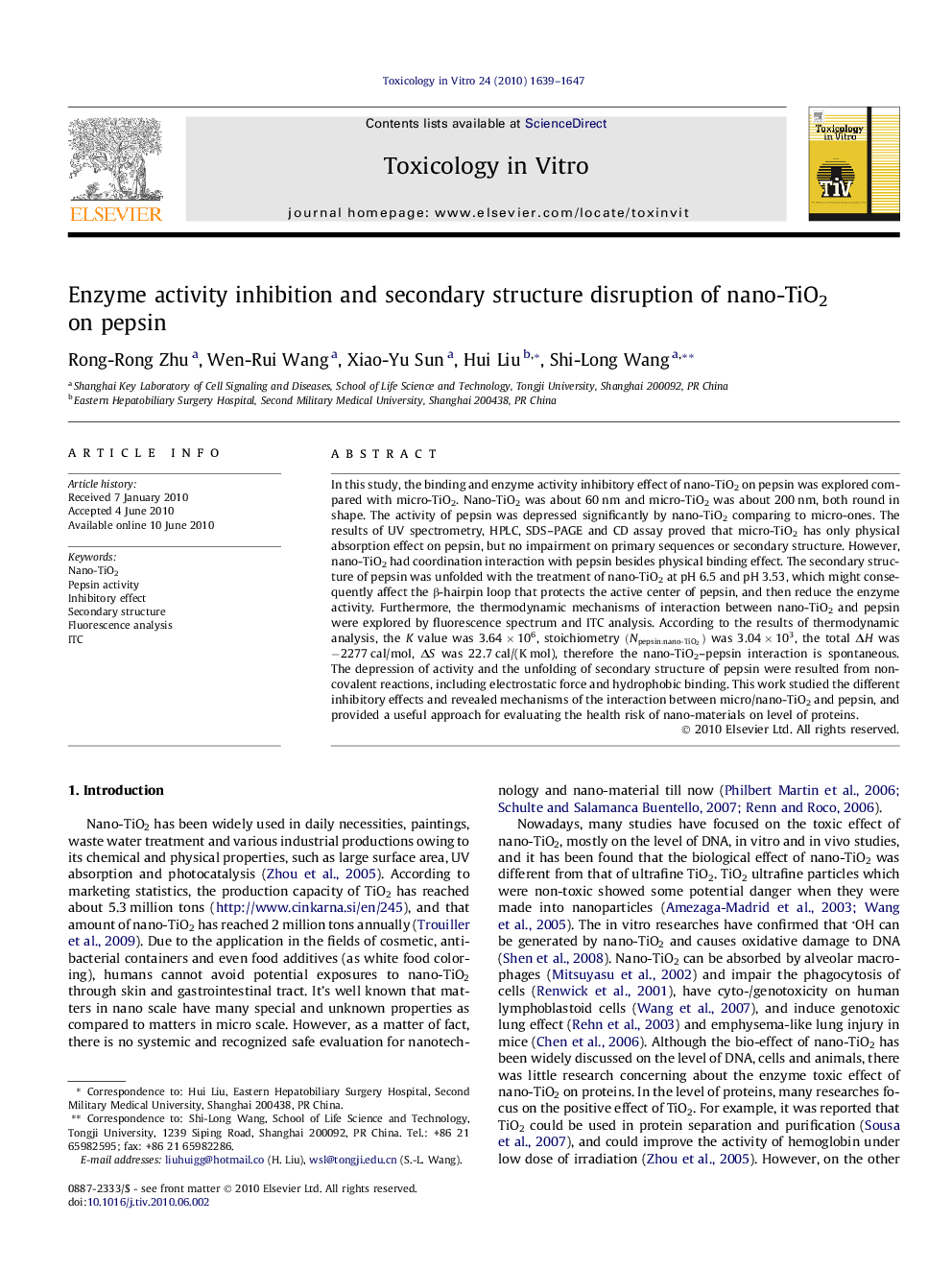| Article ID | Journal | Published Year | Pages | File Type |
|---|---|---|---|---|
| 2603207 | Toxicology in Vitro | 2010 | 9 Pages |
In this study, the binding and enzyme activity inhibitory effect of nano-TiO2 on pepsin was explored compared with micro-TiO2. Nano-TiO2 was about 60 nm and micro-TiO2 was about 200 nm, both round in shape. The activity of pepsin was depressed significantly by nano-TiO2 comparing to micro-ones. The results of UV spectrometry, HPLC, SDS–PAGE and CD assay proved that micro-TiO2 has only physical absorption effect on pepsin, but no impairment on primary sequences or secondary structure. However, nano-TiO2 had coordination interaction with pepsin besides physical binding effect. The secondary structure of pepsin was unfolded with the treatment of nano-TiO2 at pH 6.5 and pH 3.53, which might consequently affect the β-hairpin loop that protects the active center of pepsin, and then reduce the enzyme activity. Furthermore, the thermodynamic mechanisms of interaction between nano-TiO2 and pepsin were explored by fluorescence spectrum and ITC analysis. According to the results of thermodynamic analysis, the K value was 3.64 × 106, stoichiometry (Npepsin:nano-TiO2)(Npepsin:nano-TiO2) was 3.04 × 103, the total ΔH was −2277 cal/mol, ΔS was 22.7 cal/(K mol), therefore the nano-TiO2–pepsin interaction is spontaneous. The depression of activity and the unfolding of secondary structure of pepsin were resulted from non-covalent reactions, including electrostatic force and hydrophobic binding. This work studied the different inhibitory effects and revealed mechanisms of the interaction between micro/nano-TiO2 and pepsin, and provided a useful approach for evaluating the health risk of nano-materials on level of proteins.
